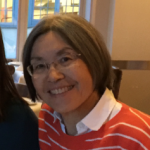Happy first CSTA blog post for 2020! Each year I try to reflect on the past year to help gain perspective for the next. When I think about CSTA and 2019, I have a warm and fuzzy feeling inside. It’s been a wonderfully success year for CSTA – from the conference in Phoenix to the amazing volunteers to the fabulous new additions in our staff to the increase of CSTA chapters across the country! WOW! Great job, everyone!
What people often don’t realize is the amount of hard work that goes on behind the scenes. Our volunteers are an essential part of what makes CSTA a growing, vibrant organization. A couple of the people who have greatly contributed to the fabulous 2019 are Fred Martin and Jen Rosato – they are the past and current chairs of the CSTA Board. They started as volunteers and have demonstrated their passion for K-12 computing education and our community. I have been lucky to be on the Board while Fred and Jen have been in leadership roles. I admire their inclusiveness and willingness to listen. I enjoy the way they organize and run meetings. And I greatly appreciate their many hours of work to help CSTA become an organization that benefits K-12 computing teachers.
As we start a new year, we will be deciding on how to spend our “free” time. There are many worthy organizations and activities we can join. They all need great volunteers. If you haven’t been a CSTA volunteer before, I highly recommend you consider trying us out! If you’re already a volunteer, be sure to keep up with all of the new activities that you may want to participate in! You don’t need to give up sleeping to volunteer – join your local chapter and participate in local activities, share something you’ve learned with another teacher. Be a part of CSTA family! (We’re really fun!!)
Here’s to an even more exciting CSTA in 2020!



